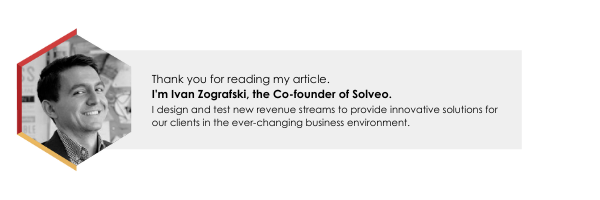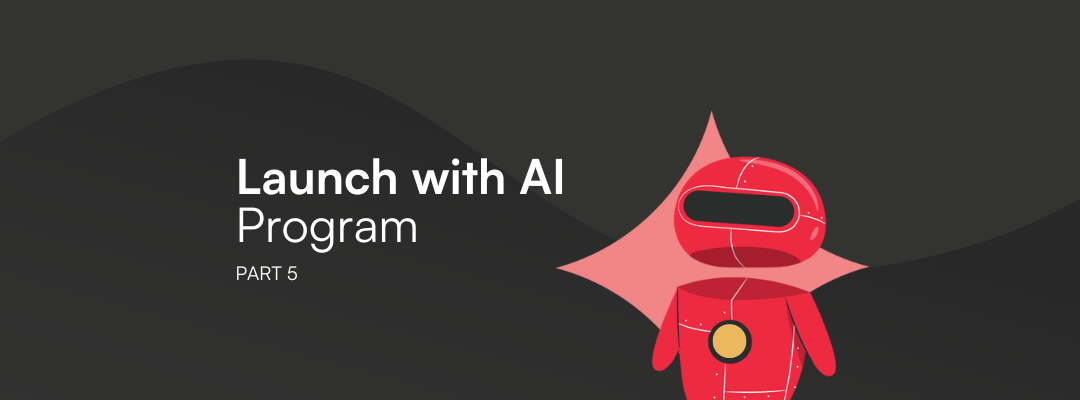In this final part of our blog series “From Service to Product” we explore the art of outbound growth through cold email outreach. We also delve into the world of paid acquisition strategies, uncovering the secrets to targeted advertising success.
Let’s take a closer look at:
MASTERING ACQUISITION CHANNELS – Outbound Growth
Intelligent Cold Email Outreach
Cold outreach is ‘free’; it requires much attention to detail and daily monitoring of results. By leveraging cold outreach, you can achieve multiple objectives, such as acquiring new customers, securing funding, establishing partnerships, and gaining valuable insights from industry experts.
Needless to say, we are being spammed every day with tons of cold emails, so you really need to know how to stand out and make it worth your while.
Cold outreach tools:
1. Mailshake: a user-friendly email outreach tool that offers features like email templates, personalization, campaign scheduling, A/B testing, and follow-up automation. It also provides analytics for tracking campaign performance and integrates with popular CRM platforms.
2. Lemlist: a popular cold email outreach tool that allows you to create personalized email campaigns using dynamic images, videos, and custom variables. It offers features such as automatic follow-ups, A/B testing, and in-depth analytics. Lemlist also integrates with various CRM systems and sales tools.
3. Apollo.io: a comprehensive sales engagement platform that combines email outreach, phone calls, and CRM data to help you target the right prospects. It offers advanced personalization, automated follow-ups, and detailed analytics. Apollo.io also provides access to a database of millions of verified B2B contacts.
4. Woodpecker: a cold email outreach tool designed specifically for B2B sales teams. It offers features like email personalization, automated follow-ups, and campaign scheduling. Woodpecker also provides analytics for tracking email performance and integrates with popular CRM platforms.
5. Reply.io: a multi-channel sales engagement platform that supports cold email outreach, as well as LinkedIn and phone-based campaigns. It offers email personalization, automated follow-ups, and A/B testing. Reply.io provides analytics to track campaign performance and integrates with various CRM systems and sales tools.
Tip for cold outreach:
Cold emailing is not a one-shot opportunity but rather a funneled approach and sequence with a set of steps and approaches aiming to trigger some kind of engagement from the receiver. In order to automate the process and avoid manually checking and monitoring each KPI, outreach tools allow you to create funnels and automated sequences.
Typically an outreach funnel consists of 3 emails sent over a period of time. Depending on the contents of the email, the funnels usually go:
1st email
Wait three days
2nd email
Wait seven days
3rd email
AI can significantly improve your outreach messages, or it can write an impressive one from scratch.
Here are a few examples of ChatGPT prompts:


VI. PAID ACQUISITION
Paid acquisition involves spending money on various marketing channels and tactics to attract and acquire customers. It typically involves advertising campaigns and activities where businesses pay for exposure, visibility, and user engagement. Paid acquisition provides businesses with more control over targeting specific audiences, increasing brand visibility, and driving immediate results. However, it requires careful planning, monitoring, and optimization to ensure a positive return on investment (ROI).
If you are in an early stage with your product, and if it is still in development and not launched, paid acquisition will most likely be your second stage of user acquisition.
You can always use paid channels as an approach for some early testing, but make sure you know what you want to discover, have a clear goal, and test efficiently.
- Which ad formats perform best for my target audience?
- How does ad placement impact conversion rates?
- What is the optimal frequency for displaying my ads?
- Are the call-to-actions (CTAs) in my ads effective?
- How do different ad headlines affect click-through rates (CTRs)?
- What is the ideal combination of ad copy and visuals for maximum engagement?
- Can I optimize my targeting criteria to reach more relevant users?
- Which keywords generate the highest quality leads?
- What are the demographics of the users engaging with my ads?
- How does the time of day or day of the week affect ad performance?
- Which devices and platforms yield the best results for my campaigns?
- Are my landing pages optimized for conversion after users click on my ads?
- How does audience segmentation impact ad performance?
- Can I improve my bidding strategy for better ad placements and cost efficiency?
- How do different ad campaigns compare in terms of ROI and overall effectiveness?
Tips for a successful paid acquisition strategy
Here are three main tips to follow when creating paid acquisition strategy:
- Plan your budget properly. Allocate a suitable budget for paid acquisition, considering marketing objectives, expected ROI, and the overall financial health of the startup.
- Set clear expectations, goals, and KPIs.
- Choosing the right paid acquisition channels for your startup involves careful consideration and strategic planning. The pool for paid advertising is quite deep. Here is a list of channels you can choose from:
Let’s take Google ads as an example. As you open Google, most probably, your searches would be:
Best tactics for launching a startup
Best-performing acquisition channels for a product launch,
How to get traction,
etc.
As an agency offering services and now a course program in this domain, we take a customer-centric approach to understand what potential customers like you would search for. We analyze the relevant keywords such as “launching a startup,” “acquisition channels,” “product launch,” and “getting traction,” knowing that this is something you might search for.
This would be a real win-win as you are searching for a service or program like this, and we are the ones providing it. AI can be a powerful help in your ad campaigns regarding keyword research and copywriting.
AI-powered keyword research and copywriting
AI-powered keyword research tools use advanced algorithms and machine learning to help you discover the most effective keywords for your content and ad campaigns. These tools can streamline the keyword research process, providing insights that can improve your search ad performance.


Google search ads and AI
Search ads are not easy to write, as you are limited in the number of characters and you have a specific structure. You only have a few words to describe your product, your offering, your price or promotion, your value proposition, and to address your audience.
You are probably aware that the fewer words you have, the more difficult it is to say.
Thanks to Generative AI, you will now be able to write extremely powerful copies in seconds. Keep in mind that in order to get a good copy, you need the best prompt. Otherwise, you will just get a generic copy.
Open a new chat and tell GPT all the details about your product. Insert your keywords, explain your campaign goals, and wait for the magic to happen.
In case you are not sure about the first draft, don’t worry; the options are limitless. You can generate as many copies as you need. Just make sure to ask for the right thing and point in the right direction.
Here are some PROMPT Templates that you can use for your ad campaigns.


Our program offers comprehensive and guided lessons for every paid acquisition channel, with a specific focus on:
- Google Ads
- Facebook and Instagram Ads
- AI-powered tools for paid acquisition channels.
The selection of paid acquisition channels may evolve over time as you gather more data, refine your targeting, and learn about your audience’s preferences. We can recommend always staying agile and adapting your strategy based on insights and feedback to optimize your marketing efforts effectively.
Read the other parts now:
- From Service to Product: Introducing Launch With AI Program for Startup Success – Part 1
- From Service to Product: Introducing Launch With AI Program for Startup Success – Part 2
- From Service to Product: Introducing Launch With AI Program for Startup Success – Part 3
- From Service to Product: Introducing Launch With AI Program for Startup Success – Part 4
Join the conversation
If you’re a startup founder with a unique story to tell, we’d love to hear from you!
Contact us to be featured in the upcoming interviews.


